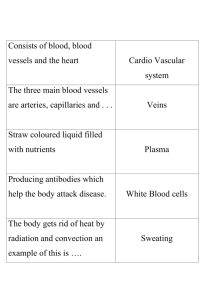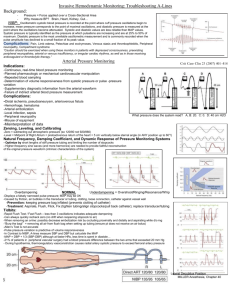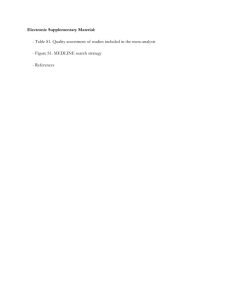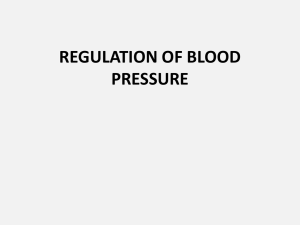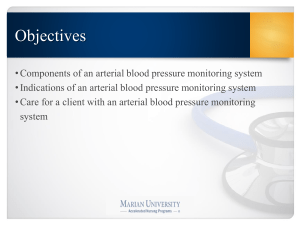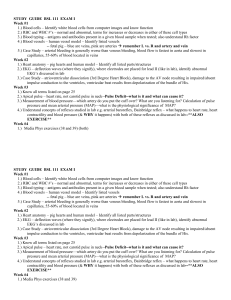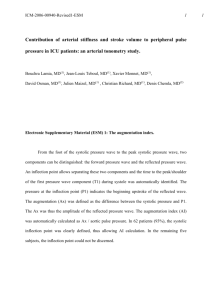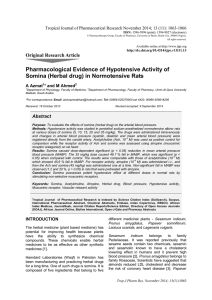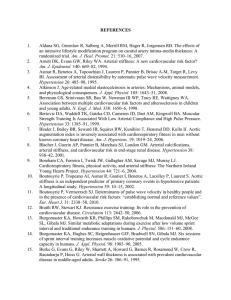Introduction to Blood Pressure - squ
advertisement
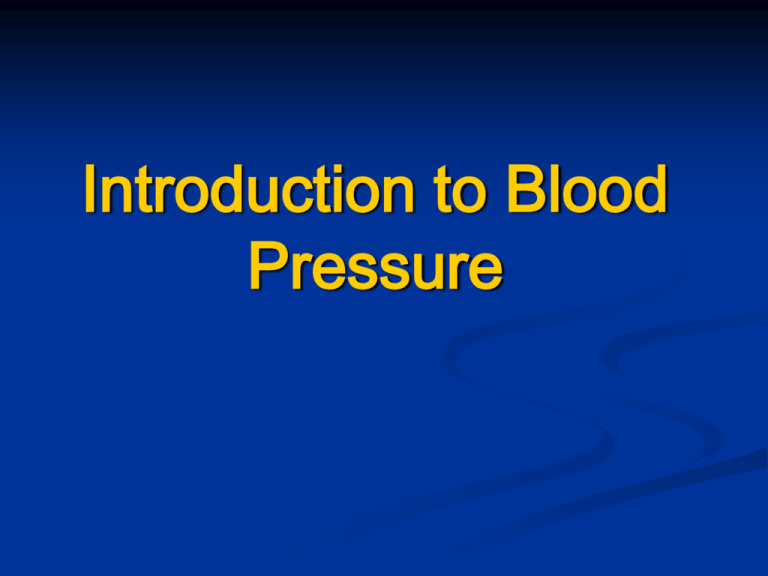
Introduction to Blood Pressure Objectives Define the term blood pressure. Define the terms: systolic blood pressure, diastolic blood pressure, mean arterial blood pressure and pulse pressure. Define the term total peripheral resistance List the short, intermediate and long term mechanisms involve on blood pressure regulation Describe the role of baroreceptors on blood pressure regulation Blood Pressure: Generated by Ventricular Contraction Arterial Blood Pressure (ABP) Arterial Blood Pressure (ABP) is defined as the lateral pressure exerted by the blood on the arterial walls. Arterial blood pressure clinically Systolic/Diastolic blood pressure 120/80 mmHg expressed as Systolic Blood Pressure (SBP) is the maximal pressure exerted by the blood on the arterial walls during ventricular systole (100-140 mmHg). Diastolic Blood Pressure (DBP) is the minimal pressure exerted by the blood on the arterial walls during ventricular diastole (60-90 mmHg). Pulse Pressure (PP) is the difference between systolic and diastolic pressures e.g. 120 – 80 = 40 mm Hg. Mean Arterial Blood Pressure (MABP) is the average blood pressure in the arteries through out the cardiac cycle. It is calculated: MABP = DBP + 1/3 PP mm Hg. MABP = 80+1/3 40 = 93.3 mm Hg. Pulse and Mean Arterial Pressures Physiological variation of ABP Age Sex Body build Exercise Emotions Sleep Control of blood pressure Mean arterial pressure is the main driving force for propelling blood to tissues MAP must be closely regulated MAP Low MAP high Driving force for blood flow unable to overcome gravity Weakening of arterial walls lead to Aneurysms Risk of rupture & hemorrhage O2 supply to brain Symptoms? Cerebral hemorrhage Rupture of major artery Factors controlling mean arterial BP MABP = CO x TPR CO Cardiac Output (SVXHR) TPR Total Peripheral Resistance (is the sum of the resistance of all peripheral vasculature in the systemic circulation) Regulation of Blood pressure Short-term regulation Acts with in seconds Neural regulation (Baroreceptor reflexes >>> sympathetic and parasympathetic) Hormones (adrenal medulla epinephrine and norepinephrine) Long-term regulation Acts within minutes to days (Kidney, rennin- angiotensin- aldosterone system) Cardiovascular Center Neural regulation of BP 1.Barorecptors reflexes Baroreceptor reflexes 2.Chemoreceptor Reflexes Carotid & aortic body Sensory receptors (detect blood levels of O2, CO2, & H ions) Hormonal Regulation Of BP 1. Adrenalin (Epinephrine) and nor-adrenaline (norepinephrine) Sympathetic stimulation. Adrenal medulla releases E + NE Vasoconstriction of arterioles & venules HR strength of contraction CO Increase BP 2. Reninangiotensinaldosterone (RAA) system 3.Anti-diuretic hormone (ADH) Synthesized in the hypothalamus and stored in the posterior pituitary gland * Dehydration or Blood Volume release of ADH kidneys reabsorption of H2O Blood volume BP * In large amounts ADH vasoconstriction (vasopressin) 4.Atrial natriuretic peptide (ANP) * Secreted by the atria of the heart * Blood volume stretch cells in the atria of the heart Vasodilatation of Blood vessels Promote loss of Na & H2O Blood volume BP Homeostatic response to shock

